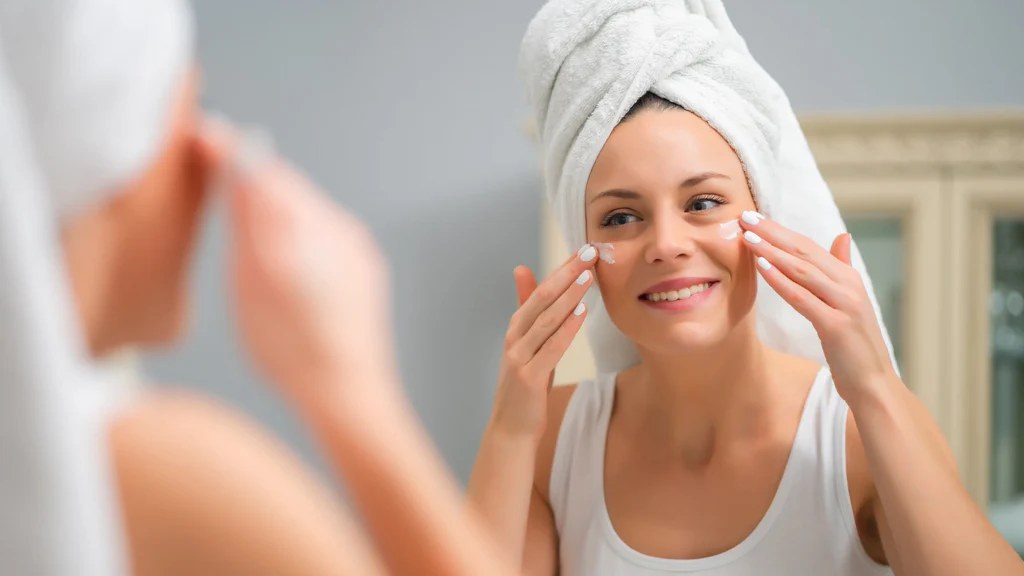Combination skin can be tricky to care for. It’s the skin type that sits between oily and dry—some areas of your face might be shiny and prone to breakouts (usually the T-zone), while others may feel tight, dry, or flaky (typically the cheeks or jawline).
The key to managing combination skin is balance. Your skincare routine needs to address both oil control and hydration, without overwhelming either side. This guide provides a balanced, effective skincare routine for combination skin that works both morning and night.
Understanding Combination Skin
Before building a routine, it’s important to understand what defines combination skin:
- Oily T-zone (forehead, nose, chin)
- Dry or normal cheeks and jawline
- Occasional breakouts in oily areas
- Sensitivity to strong or overly rich products
This skin type requires targeted care that addresses the different needs of each zone without causing imbalance.
Morning Skincare Routine for Combination Skin
A good morning routine should prep your skin for the day ahead, control oil, and provide lightweight hydration.
1. Gentle Cleanser
Use a water-based, low-foaming cleanser that removes excess oil without drying the skin.
Tip: Avoid harsh cleansers with sulfates or alcohol. They can strip your skin, causing more oil production in the T-zone.
2. Hydrating Toner
Apply a gentle, alcohol-free toner to restore pH balance and add light hydration.
Look for: Toners with hyaluronic acid, rose water, or green tea.
3. Antioxidant Serum
Use a vitamin C or niacinamide serum to brighten skin tone and improve overall texture.
Benefits: Niacinamide also helps regulate oil production, making it ideal for combination skin.
4. Oil-Free Moisturizer
Choose a lightweight, non-comedogenic gel or lotion.
Look for: Ingredients like glycerin, aloe vera, or panthenol that hydrate without clogging pores.
5. Broad-Spectrum Sunscreen (SPF 30 or higher)
Never skip sunscreen. Opt for a gel-based or mattifying formula that doesn’t make your T-zone greasy.
Evening Skincare Routine for Combination Skin
The evening routine should focus on removing impurities, repairing skin, and maintaining hydration overnight.
1. Double Cleansing
Start with an oil-based cleanser to remove makeup and sunscreen, followed by a gentle water-based cleanser.
Why it works: Oil dissolves oil—so this helps break down excess sebum without over-drying.
2. Toner
Reapply a hydrating toner to soothe the skin and prepare it for treatment steps.
3. Targeted Treatments (Optional)
If you have occasional breakouts or pigmentation, this is the step to apply spot treatments or active serums.
Examples: Use salicylic acid or azelaic acid on breakout-prone areas only.
4. Hydrating Serum
Use a serum with hyaluronic acid or peptides to maintain hydration and support skin repair overnight.
5. Moisturizer
At night, use a slightly richer moisturizer than in the morning—but avoid heavy creams unless you have dry patches.
Pro tip: Apply a thicker layer on the cheeks and a lighter one on the T-zone, or use two different moisturizers.
Weekly Add-ons for Combination Skin
| Product Type | How Often | Purpose |
|---|---|---|
| Exfoliant (BHA/AHA) | 1–2 times/week | Removes dead skin, prevents clogged pores |
| Clay Mask (T-zone) | 1–2 times/week | Absorbs excess oil and tightens pores |
| Hydrating Mask (Cheeks) | 1–2 times/week | Soothes dry areas and boosts hydration |
How to Balance the T-Zone and Dry Areas
Combination skin often needs zoning—treating different parts of your face with different products.
Zoning Tips:
- Use mattifying primers or masks only on the T-zone.
- Apply hydrating or nourishing products to drier areas.
- Use multi-masking: apply a clay mask on oily areas and a hydrating mask on dry zones at the same time.
Example Routine: Morning vs. Evening
| Step | Morning Routine | Evening Routine |
|---|---|---|
| Cleanser | Gentle water-based cleanser | Double cleanse (oil + water-based cleanser) |
| Toner | Hydrating toner | Hydrating toner |
| Serum | Niacinamide or vitamin C | Hyaluronic acid or peptide serum |
| Moisturizer | Oil-free gel moisturizer | Lightweight cream or zone-specific care |
| Sunscreen | SPF 30+ broad-spectrum sunscreen | — |
| Treatments | — | Spot treatment (if needed) |
Related Consideration
If your skin is also breakout-prone in oily areas, you may benefit from adopting certain elements of a Nighttime Skincare Routine for Acne-Prone Skin—such as using salicylic acid, retinoids, or lightweight non-comedogenic moisturizers. However, apply them only to oily or acne-prone areas, not the entire face, to avoid over-drying.
FAQs: Skincare Routine for Combination Skin
Q1: Can I use the same moisturizer for my whole face?
You can, but if your T-zone is very oily and your cheeks are dry, consider using two different moisturizers or adjusting the amount based on the area.
Q2: Do I need to exfoliate regularly?
Yes, but gently. Use chemical exfoliants like BHA (for oily areas) and AHA (for dry areas) once or twice a week.
Q3: Is sunscreen necessary for combination skin?
Absolutely. Use a lightweight, non-greasy sunscreen every morning, even if you’re indoors.
Q4: Can I skip toner if I use serum?
Toners prep your skin and add hydration. They’re especially helpful if you’re using actives or exfoliants in your serum.
Q5: How do I prevent breakouts in my T-zone?
Use oil-controlling products in that area, cleanse properly at night, and avoid over-moisturizing the oily zones.
Final Thoughts
Combination skin doesn’t have to be confusing. With the right skincare routine, you can balance oil production, hydrate dry areas, and keep your skin clear and comfortable. It’s all about understanding your skin’s behavior and treating it with targeted care.
A well-structured routine not only improves your skin’s current condition but also helps prevent future issues. Stick with it, be patient, and remember: skincare is a long-term investment in your skin’s health.


